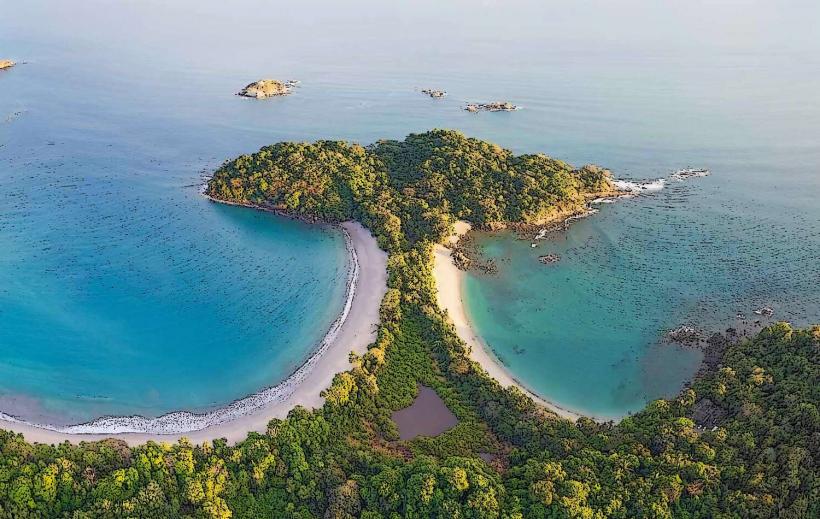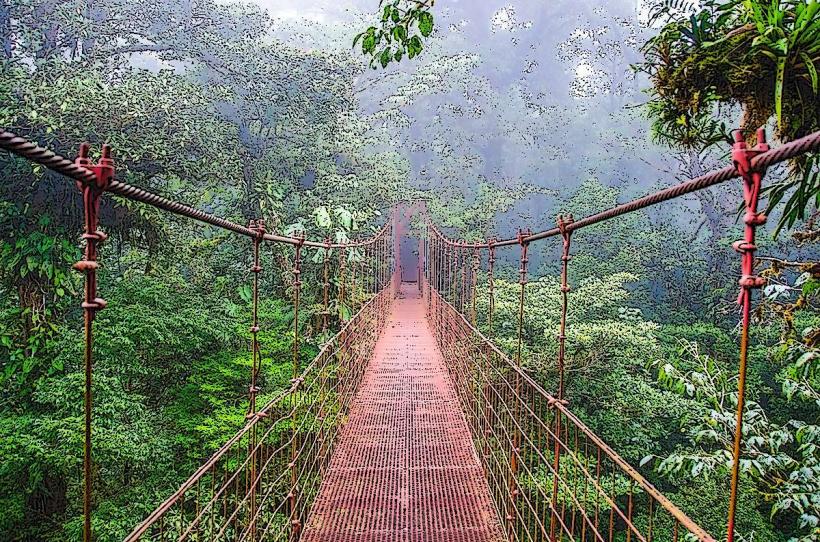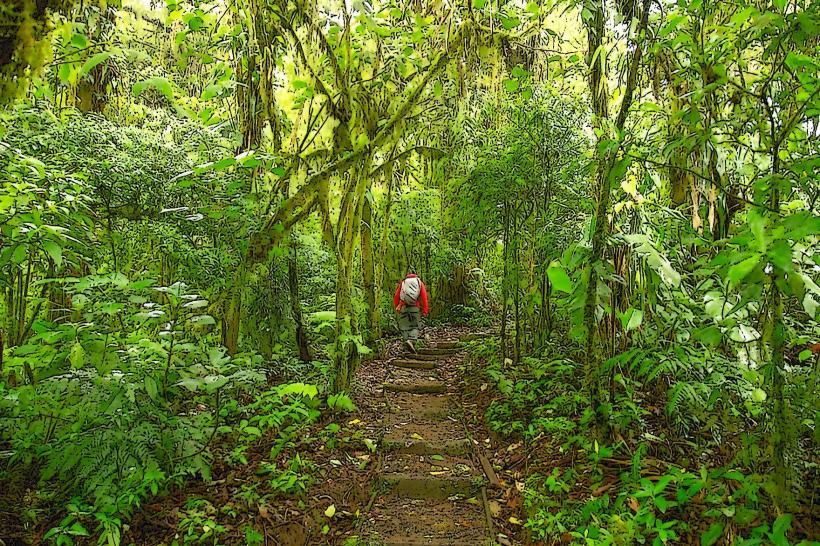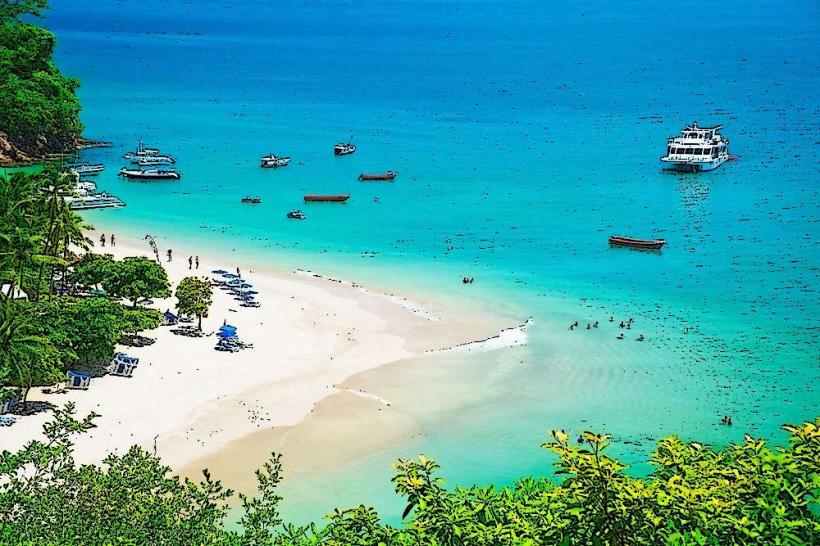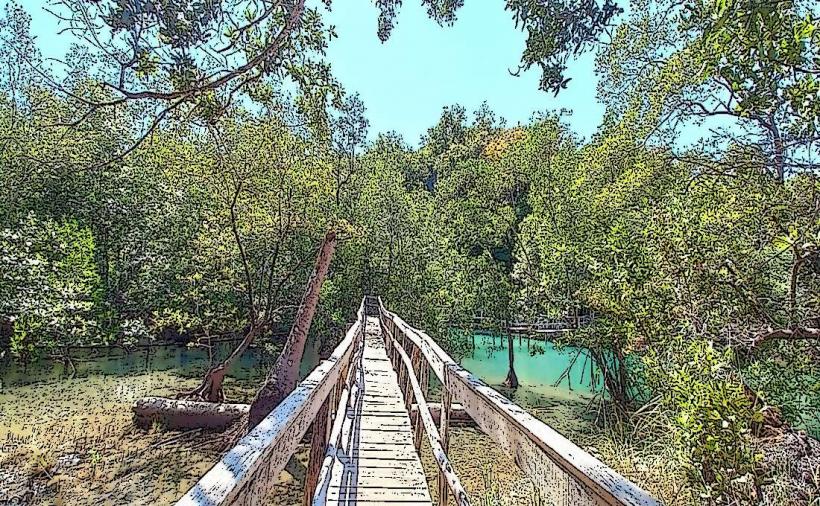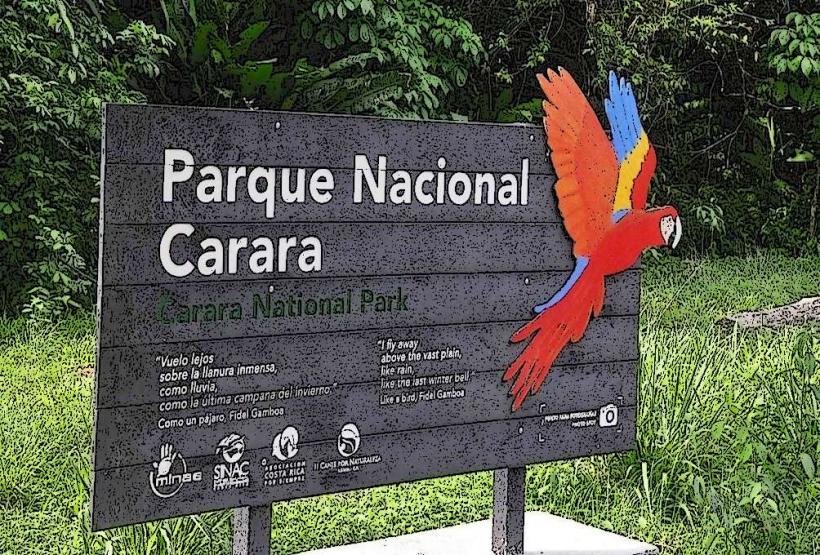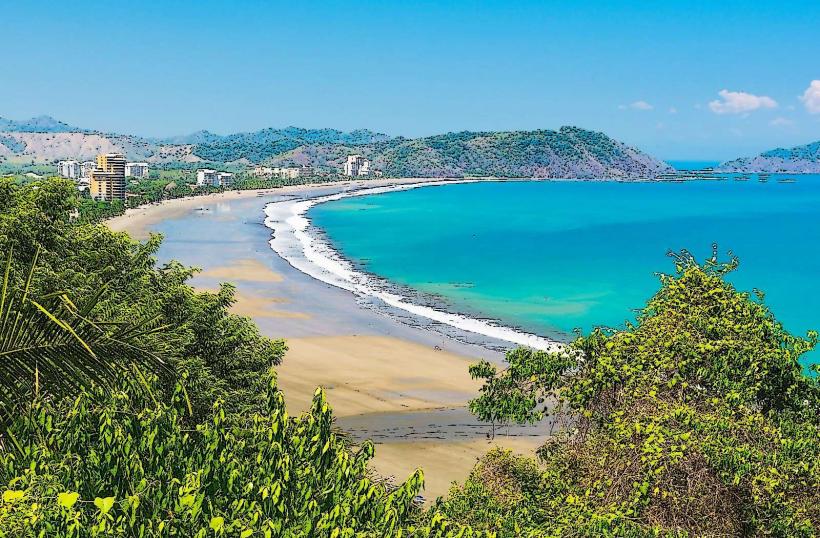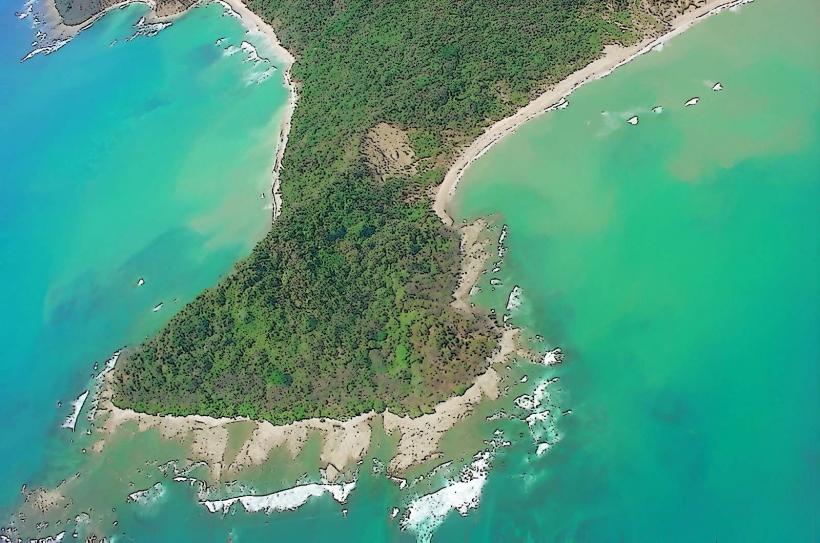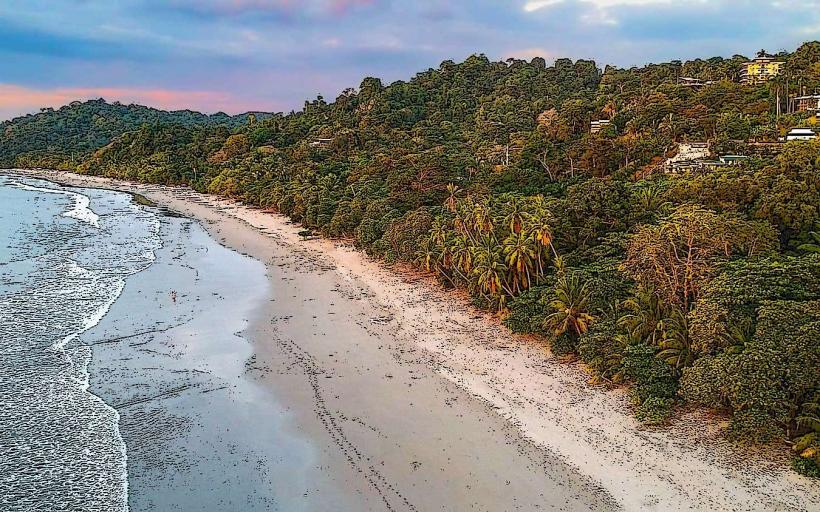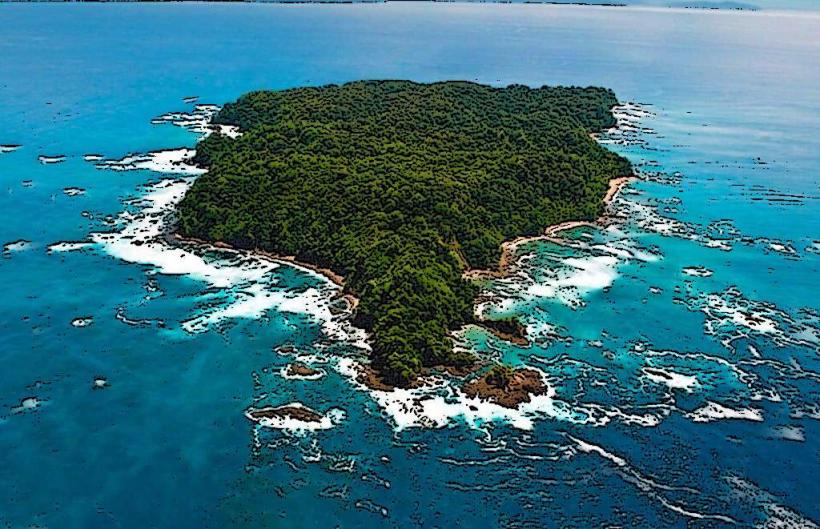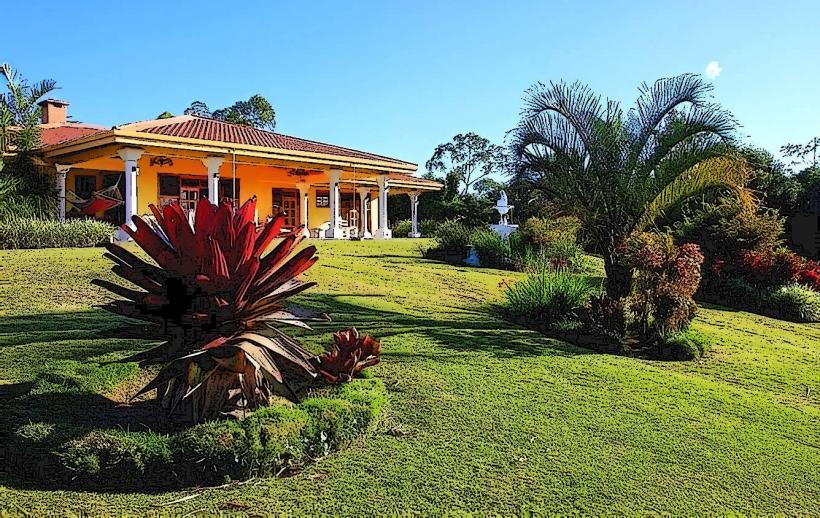Information
Landmark: Tarcoles Bridge (Crocodile Bridge)City: Puntarenas
Country: Costa Rica
Continent: North America
Tarcoles Bridge, commonly known as Crocodile Bridge, is a famous landmark located in Tarcoles, on the Pacific side of Costa Rica, specifically in the Cantón de Garabito, Puntarenas Province. The bridge spans the Tarcoles River, and it is renowned for the large population of American crocodiles that inhabit the river below, making it one of the most iconic places in Costa Rica for crocodile watching.
Overview
- Location: Near the town of Tarcoles, about 1.5 hours by car from San José, the capital of Costa Rica.
- Bridge Structure: The Tarcoles Bridge is a steel bridge that spans the Tarcoles River. It is part of Route 27, which connects San José to the Pacific Coast and is a major thoroughfare for travelers heading to popular destinations like Jaco, Manuel Antonio, and the Nicoya Peninsula.
- Famous For: The massive number of American crocodiles that can be seen in the river below, making it a must-see attraction for nature enthusiasts and photographers.
American Crocodiles
- Crocodile Population: The Tarcoles River is home to one of the largest populations of American crocodiles (Crocodylus acutus) in the world, with estimates suggesting that there are over 30 adult crocodiles visible in the area. These crocodiles can grow up to 13-15 feet in length and weigh several tons.
- Crocodile Viewing: Visitors can often spot crocodiles basking on the banks of the river or swimming in the water. The sight of these large reptiles is a major draw for tourists stopping at the bridge.
- Wildlife Experience: The crocodiles are frequently seen from the pedestrian walkway on the bridge, which offers a perfect view of the river below. Many of the crocodiles are very close to the bridge, allowing for excellent photo opportunities.
Other Wildlife
In addition to crocodiles, the Tarcoles River and its surroundings are home to a diverse range of other wildlife, including:
- Birds: The area is a popular spot for birdwatching, with species like herons, kingfishers, egrets, and parrots seen frequently in the region.
- Iguanas: Green iguanas and other reptiles can often be spotted near the riverbanks.
- Monkeys: The surrounding area, including the Carara National Park nearby, is home to howler monkeys, white-faced monkeys, and other wildlife.
- Fish: The river is home to several species of fish, including some species that crocodiles prey on.
Visiting the Tarcoles Bridge
Crocodile Viewing:
- The best way to experience the crocodiles is by stopping on the bridge and observing them from the pedestrian walkway. The crocodiles are often visible year-round, with peak visibility during the dry season (December to April).
- While the crocodiles are usually seen in the river below, seasonal variations in water levels can affect visibility. The dry season typically provides the clearest view as the water levels drop, and the crocodiles gather near the riverbanks.
Guided Tours:
- For a more informative experience, several local operators offer crocodile-watching tours that may involve a short boat ride along the Tarcoles River. These tours give visitors an up-close look at the crocodiles and may also include information about the region's ecosystem and wildlife.
- Guides also provide explanations of the biology and behavior of the American crocodile, as well as safety tips for observing these powerful reptiles from a distance.
Safety:
- While the crocodiles appear to be relatively docile from the bridge, it’s important to remember that they are wild animals and can be dangerous. Visitors should maintain a safe distance and avoid feeding or disturbing the animals.
Photography:
- The Tarcoles Bridge is a popular spot for photography, especially for those looking to capture images of the massive crocodiles basking in the sun or swimming in the river. Early mornings or late afternoons are the best times to take photos due to the lighting and active wildlife.
Nearby Attractions
Carara National Park:
- Located just a few kilometers from Tarcoles Bridge, Carara National Park is a biodiversity hotspot and a great place for eco-tourism. It’s known for its rainforest, birdwatching opportunities, and the Scarlet Macaws that inhabit the park.
- Visitors can explore hiking trails in the park, which takes them through a variety of ecosystems, including tropical dry forest, wetlands, and primary rainforest.
Jaco Beach:
- Jaco is a popular beach town located about 30 minutes from the Tarcoles Bridge. It is known for its surf-friendly waves, lively nightlife, and a variety of restaurants and accommodations.
Manuel Antonio National Park:
- A bit further down the coast, Manuel Antonio National Park is one of Costa Rica’s most famous parks, known for its pristine beaches, rainforests, and rich wildlife including sloths, monkeys, and toucans.
Isla Damas:
- For more wildlife experiences, Isla Damas offers boat tours through the mangroves, where visitors can observe more crocodiles, monkeys, and an abundance of birds.
Visitor Information
Opening Hours:
- The Tarcoles Bridge itself is open 24/7, but the best time to visit for viewing the crocodiles is during the daylight hours, from morning to afternoon.
Getting There:
- By Car: Tarcoles is easily accessible by car, especially for those traveling along Route 27 from San José or the Pacific Coast. It’s just 1.5 hours from San José.
- The bridge is on the main highway, and you can stop at the designated pedestrian walkway for viewing the crocodiles.
Admission:
- There is no fee to visit the Tarcoles Bridge and observe the crocodiles from the pedestrian walkway. However, guided boat tours or private excursions to the Tarcoles River may incur a fee, typically in the range of $30 to $50 USD per person.
Facilities:
- There are no formal facilities at the bridge itself, but there are local vendors who sell snacks, drinks, and souvenirs in the area.
- For more comprehensive amenities (restaurants, restrooms), visitors can head to nearby towns like Tarcoles or Jaco.
Best Time to Visit
- Dry Season (December to April): This is the best time to visit the Tarcoles Bridge for crocodile viewing, as the lower water levels make it easier to see the crocodiles lounging on the riverbanks.
- Wet Season (May to November): The wet season brings higher water levels, which may obscure the crocodiles, but there are still good opportunities to spot them, especially after rainfalls when the crocodiles may be more active.
Conclusion
Tarcoles Bridge is one of the most unique and accessible wildlife viewing spots in Costa Rica, offering visitors the rare opportunity to observe American crocodiles in their natural habitat. Whether you’re passing through on your way to the Pacific coast, embarking on a boat tour, or simply stopping for a quick view from the bridge, it’s an experience that combines both adventure and education. Make sure to respect the animals and enjoy the unforgettable sight of these prehistoric reptiles!

